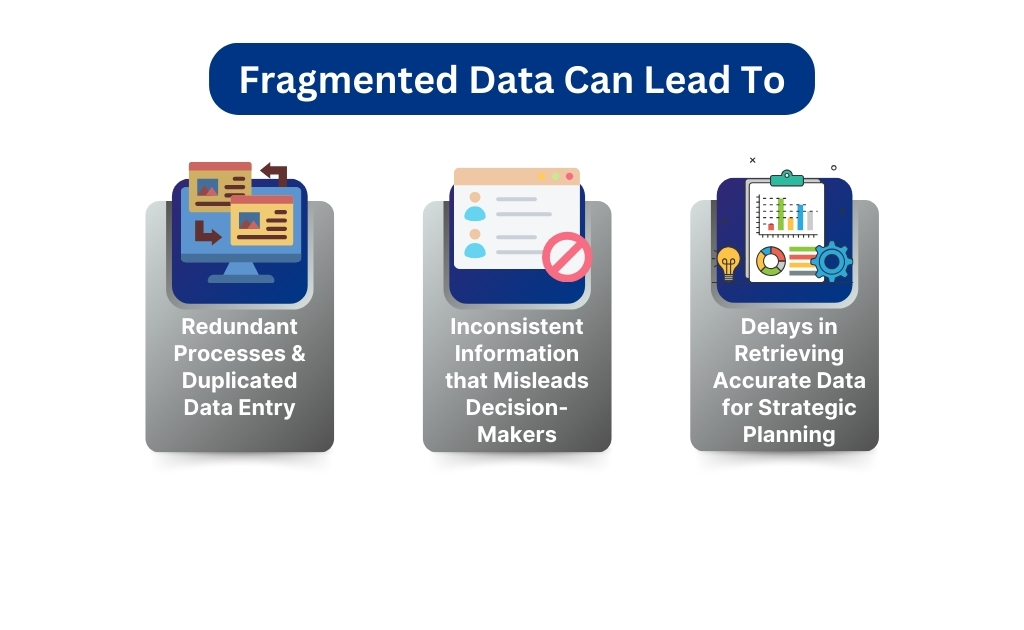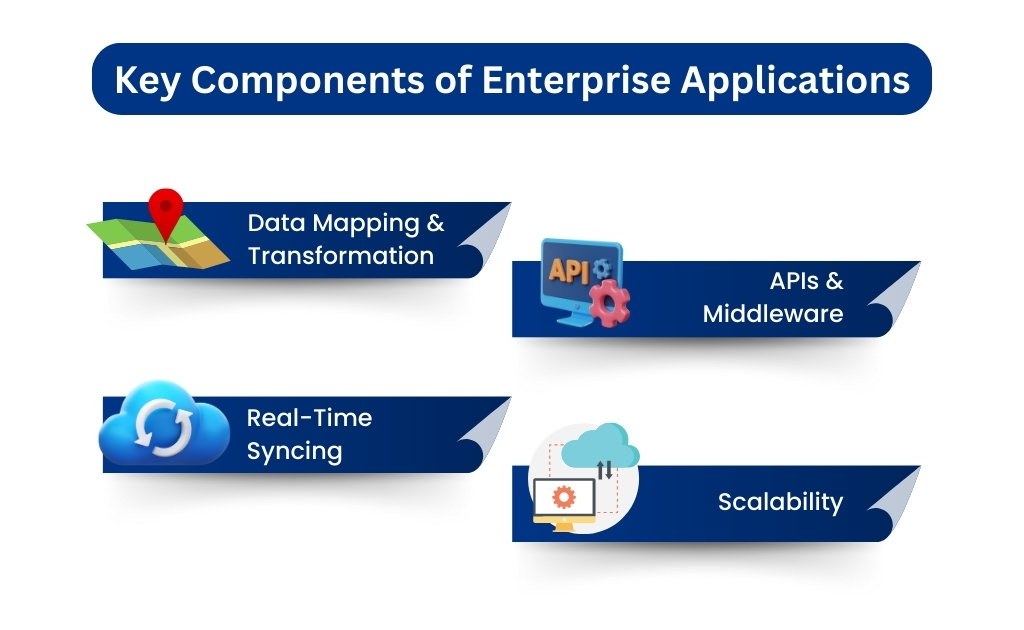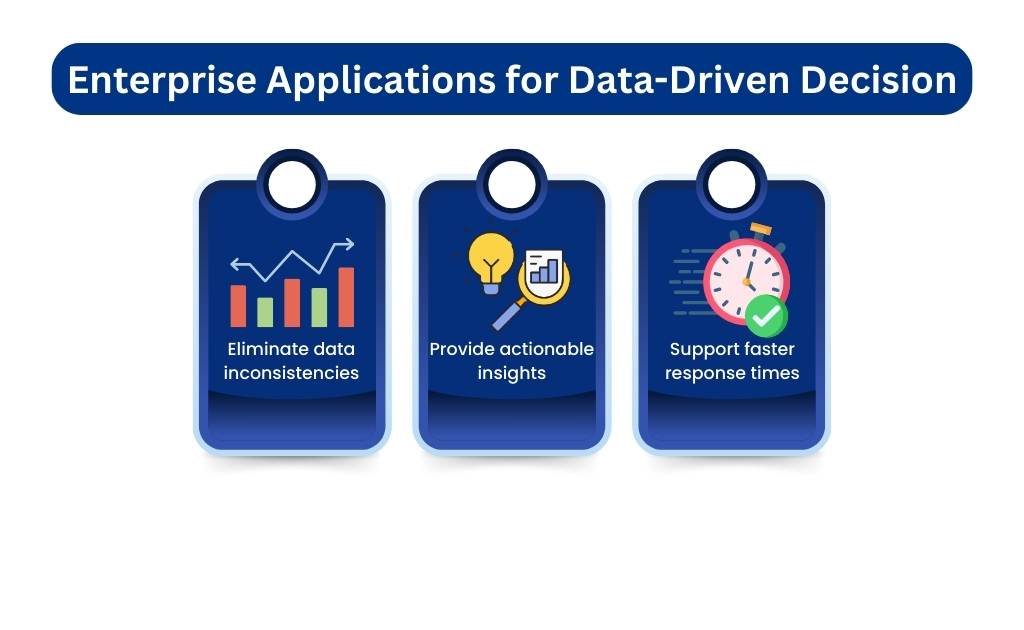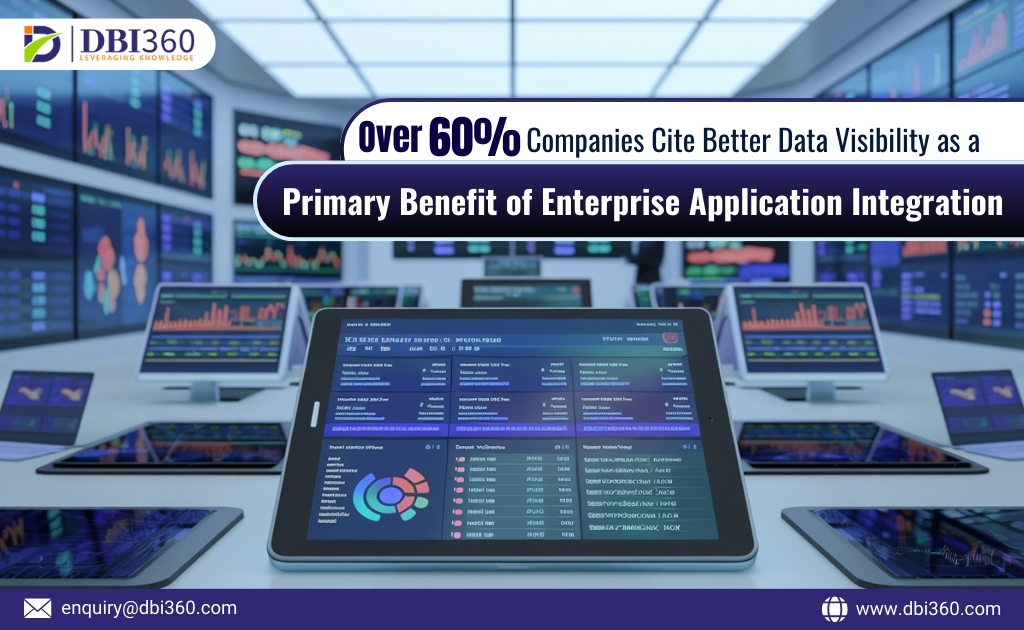For businesses of all sizes, data is a powerful resource, yet it’s often trapped in silos, leading to inefficiencies and missed opportunities. When enterprise applications operate independently, teams end up with fragmented information that limits the business’s potential to operate seamlessly. This is where enterprise application integration steps in, transforming scattered data into a unified resource that supports informed decisions and agile operations.
Let’s explore how this strategic approach can break down data silos, establish synergy across departments, and elevate business performance.
The Need for Unified Data in Today’s Enterprise Landscape
Unified data isn’t just a convenience; it’s a competitive necessity. For businesses to be agile and responsive, they need a clear view of their operations, customers, and performance metrics.

Enterprise applications without integration create barriers, leading to higher operational costs and missed growth opportunities. Achieving data unification through integration enables smooth data flow across systems, creating a real-time source of truth for all departments.
How Enterprise Applications Breaks Down Data Silos
Enterprise application integration software enables various systems to communicate seamlessly, ensuring data flows freely across platforms. By connecting essential applications—like CRM, ERP, and HRM—organizations gain real-time access to consistent data, making cross-functional collaboration much easier. Integration supports:
- Real-time data sharing: When data updates in one system, all connected systems reflect these changes immediately.
- Enhanced data visibility: Teams have access to comprehensive information, regardless of which application generated it.
- Seamless workflows: Cross-departmental tasks and processes are simplified, eliminating manual data transfers or system gaps.
With integration software, the data flow becomes uninterrupted, fostering a more collaborative environment where every department is aligned with unified information.
Key Components of an Effective Enterprise Application Integration Strategy
For enterprise application integration to succeed, it must be built on a strong foundation of essential components:
- Data Mapping and Transformation: Ensures that data is consistent and readable across various applications, no matter where it originates.
- APIs and Middleware: Facilitates communication between disparate systems, serving as a bridge for data exchange.
- Real-Time Syncing: Keeps all systems updated simultaneously, which is crucial for fast-paced environments.
- Scalability: Ensures the integration solution can expand as the business grows, adapting to increased data volumes and additional applications.

A well-structured integration strategy enables organizations to maintain accurate data while scaling their operations, laying the groundwork for improved efficiency and data accuracy.
Steps to Create Synergy Through Enterprise Applications
Implementing enterprise application integration software is a strategic process that requires careful planning. Here are some essential steps:
- Identify Core Applications: Determine which systems are critical for integration. Common choices include ERP, CRM, and finance systems.
- Define Integration Goals: Set specific objectives like reducing data redundancy, enhancing data visibility, or increasing cross-departmental communication.
- Implement and Test Integration Software: Select software that seamlessly connects your applications and performs reliably.
- Train Teams on Unified Data Access: Educate users on accessing and leveraging unified data to ensure everyone maximizes the benefits of integration.
By taking a structured approach to integration, businesses can achieve operational alignment and enable smoother, data-driven workflows across departments.
Real-World Applications of Enterprise Application Integration
Enterprise application integration plays a vital role in diverse industries. Here are some real-world examples:
- Healthcare: Integrating electronic health records (EHR) with CRM systems to streamline patient management and care coordination.
- Retail: Syncing POS and inventory systems ensures real-time stock updates, minimizing stockouts and overstocks.
- Finance: Consolidating accounting and ERP systems for faster, more accurate financial reporting and compliance management.
These industry-specific applications highlight how integration breaks down silos and supports efficient, agile operations, regardless of the sector.
Data-Driven Decision-Making Enabled by Integration
With enterprise applications operating in sync, decision-makers have a unified, accurate dataset at their disposal. This synergy empowers data-driven decision-making by:
- Eliminating data inconsistencies: Integration ensures a single source of truth across all departments, so decision-makers don’t have to question the data’s accuracy.
- Providing actionable insights: Access to comprehensive data allows for deeper analysis and predictive insights.
- Supporting faster response times: With real-time data, leaders can act swiftly to market changes or operational needs.

By using unified data as the foundation for strategy, businesses make decisions that are grounded in reliable insights, fostering both growth and resilience.
Future-Proofing Your Business with Enterprise Application Integration
Enterprise application integration isn’t just a current necessity; it’s also a future-proofing strategy. Here’s how integration software prepares businesses for growth:
- Scalability: As your business grows, your integration solution can expand to accommodate new applications and increased data volumes.
- AI and Predictive Analytics: Unified data allows businesses to tap into advanced analytics, leveraging AI for trend analysis, demand forecasting, and proactive problem-solving.
- Adaptability in Changing Markets: Integration ensures your systems stay agile, ready to adapt as your industry or business needs evolve.
With a strong integration strategy, businesses stay adaptable and ready to scale, enabling long-term growth and sustainability.
Conclusion
Moving from silos to synergy through enterprise applications unlocks the full potential of an organization’s data, providing a unified foundation for informed decision-making and efficient operations. By investing in integration software, businesses create a seamless data flow that fosters collaboration, improves responsiveness, and strengthens resilience in a competitive landscape.Whether it’s for enhancing customer experience, improving supply chain visibility, or streamlining financial reporting, an integrated enterprise application suite like DBI360 can help companies operate at their best.
Ready to embrace the power of synergy and let unified data drive your business forward?

